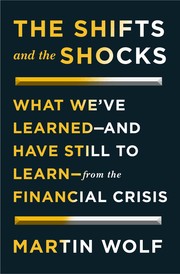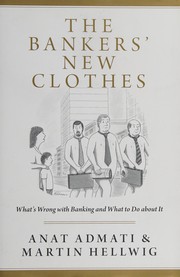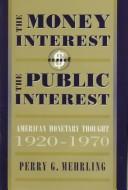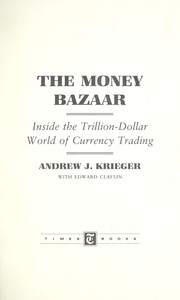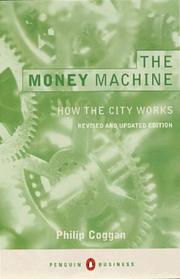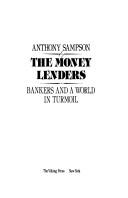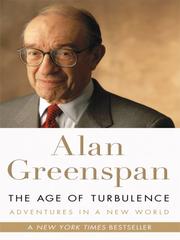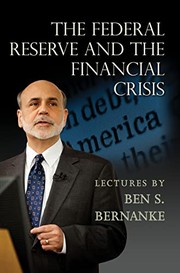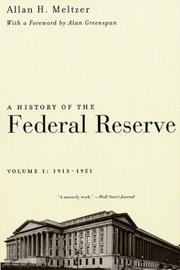Are you eager to dive into the complex world of monetary policy and gain a deeper understanding of its impact on the economy? Look no further! We’ve compiled a list of the 20 best books on monetary policy that offer insightful perspectives on central banking, interest rates, inflation, and much more. Whether you’re a seasoned economist or just starting to explore this fascinating subject, these books are guaranteed to enrich your knowledge and spark thought-provoking discussions. From timeless classics to contemporary analyses, these monetary policy books are essential additions to any bookshelf.
Contents
- 1 20 Best Monetary Policy Books
- 2 The Alchemists: Three Central Bankers and a World on Fire
- 3 The End of Alchemy: Money, Banking, and the Future of the Global Economy
- 4 The Curse of Cash
- 5 The Shifts and the Shocks: What We’ve Learned and Have Still to Learn from the Financial Crisis
- 6 The Money Problem: Rethinking Financial Regulation
- 7 The Bankers’ New Clothes: What’s Wrong with Banking and What to Do about It
- 8 The Age of Stagnation: Why Perpetual Growth Is Unattainable and the Global Economy Is in Peril
- 9 The Money Cult: Capitalism, Christianity, and the Unmaking of the American Dream
- 10 The End of Normal: The Great Crisis and the Future of Growth
- 11 The Money Men: Capitalism, Democracy, and the Hundred Years’ War over the American Dollar
- 12 The Money Interest and the Public Interest: American Monetary Thought, 1920-1970
- 13 The Money Bazaar: Inside the Trillion-Dollar World of Currency Trading
- 14 The Money Machine: How the City Works
- 15 The Money Game
- 16 The Money Illusion
- 17 The Money Lenders: Bankers and a World in Turmoil
- 18 The Age of Turbulence: Adventures in a New World
- 19 The Federal Reserve and the Financial Crisis
- 20 The New Lombard Street: How the Fed Became the Dealer of Last Resort
- 21 A History of the Federal Reserve, Volume 1: 1913-1951
- 22 Final Thoughts on Best Monetary Policy Books
- 23
20 Best Monetary Policy Books
The Alchemists: Three Central Bankers and a World on Fire
by Neil Irwin
The Alchemists: Three Central Bankers and a World on Fire by Neil Irwin is a captivating book about monetary policy that takes readers on a journey through the global financial crisis of 2008 and its aftermath. Irwin provides an inside look at the pivotal role played by three central bankers – Ben Bernanke of the Federal Reserve, Mervyn King of the Bank of England, and Jean-Claude Trichet of the European Central Bank – as they grappled with the challenges of stabilizing the world economy.
Irwin’s narrative is both insightful and gripping, offering a behind-the-scenes account of the decisions, debates, and personalities that shaped the response to the crisis. He delves into the high-stakes policy discussions, the clashes of ideology, and the personal dynamics that drove the actions of these influential figures.
Through meticulous research and engaging storytelling, Irwin sheds light on the complex workings of monetary policy and its profound impact on the global economy. The Alchemists is a must-read for anyone interested in understanding the inner workings of central banking and the critical role it plays in shaping the financial landscape.
The End of Alchemy: Money, Banking, and the Future of the Global Economy
by Mervyn King
The End of Alchemy by Mervyn King is a thought-provoking book on monetary policy that delves into the global economy’s future. King, a former governor of the Bank of England, provides an insightful analysis of the flaws in the current financial system and offers innovative solutions for a more stable and resilient economy. He argues that the traditional alchemy of banking, where money is created out of thin air, is no longer sustainable and proposes a radical overhaul of the banking and financial sector. Through a combination of historical context, economic theory, and real-world examples, King presents a compelling case for reforming the monetary system to prevent future economic crises.
This book about monetary policy is a must-read for anyone interested in understanding the intricacies of the global economy and the role of central banks in shaping it. King’s lucid writing style and deep expertise make The End of Alchemy an essential read for policymakers, economists, and anyone concerned about the future of the global economy.
The Curse of Cash
by Kenneth S. Rogoff
The Curse of Cash by Kenneth S. Rogoff is a groundbreaking book on monetary policy that challenges the traditional view of cash as a necessary and harmless tool in the modern economy. Rogoff argues that the widespread use of cash facilitates tax evasion, corruption, and crime, while also limiting the effectiveness of monetary policy and hindering central banks’ ability to stimulate the economy during a crisis. He makes a compelling case for phasing out large-denomination banknotes, such as the $100 bill, to reduce these negative effects and improve the efficiency and transparency of the financial system.
Rogoff’s thought-provoking analysis delves into the history and economics of cash, as well as its impact on society and the global economy. Through meticulous research and clear, accessible writing, he presents a compelling case for rethinking the role of cash in the modern world. The Curse of Cash is a must-read for anyone interested in the intersection of economics, public policy, and finance, and it offers valuable insights for policymakers and citizens alike.
The Shifts and the Shocks: What We’ve Learned and Have Still to Learn from the Financial Crisis
by Martin Wolf
The Shifts and the Shocks: What We’ve Learned and Have Still to Learn from the Financial Crisis, written by Martin Wolf, is a captivating book about monetary policy that delves into the lessons learned from the global financial crisis. Wolf, a renowned financial journalist, provides a comprehensive overview of the causes and consequences of the crisis, as well as the policy responses that followed. He offers an insightful analysis of the shifts in the global economy and the shocks that have reverberated through financial markets.
Wolf’s monetary policy book goes beyond simply recounting the events of the crisis; it also explores the challenges that policymakers still face in addressing vulnerabilities in the financial system and achieving sustainable economic growth. His expertise and engaging writing style make this book a must-read for anyone seeking a deeper understanding of the complexities of the modern global economy and the role of monetary policy in shaping its trajectory.
The Money Problem: Rethinking Financial Regulation
by Morgan Ricks
The Money Problem: Rethinking Financial Regulation by Morgan Ricks is a thought-provoking book on monetary policy that challenges traditional ideas about financial regulation. Ricks argues that the current financial system is inherently unstable and prone to crises, and proposes a new framework for monetary policy that aims to address the root causes of instability. He suggests that the government should take a more active role in managing the money supply and ensuring the stability of the financial system. Ricks also delves into the complexities of the current banking system and proposes alternative methods for regulating and stabilizing it. This monetary policy book offers a fresh perspective on the financial system and provides valuable insights for policymakers, economists, and anyone interested in understanding the complexities of modern finance.
The Bankers’ New Clothes: What’s Wrong with Banking and What to Do about It
by Anat Admati and Martin Hellwig
The Bankers’ New Clothes by Anat Admati and Martin Hellwig is a thought-provoking book on banking that challenges the conventional wisdom about the banking industry. The authors argue that the banking system is fundamentally flawed and in need of substantial reform. They critique the prevailing practices of excessive leverage and inadequate capital that have contributed to financial crises and argue for a more robust and stable banking system.
This book about monetary policy offers a compelling analysis of the risks that banks impose on society and proposes concrete solutions to address these issues. Admati and Hellwig’s arguments are backed by thorough research and provide a comprehensive understanding of the complexities of the banking system.
Readers will find The Bankers’ New Clothes to be a compelling and enlightening monetary policy book that challenges the status quo and presents a compelling case for reform. Whether you are a finance professional, policymaker, or simply interested in understanding the intricacies of banking, this book is a must-read for anyone concerned about the health and stability of the financial system.
The Age of Stagnation: Why Perpetual Growth Is Unattainable and the Global Economy Is in Peril
by Satyajit Das
The Age of Stagnation by Satyajit Das is a thought-provoking book about the challenges facing the global economy. Das argues that perpetual growth is unattainable and that the world is at risk of stagnation due to a combination of factors such as debt, demographics, and the limits of monetary policy. Through a comprehensive analysis, Das explores the impact of these issues on different regions and economies, offering insights into the potential consequences for businesses, governments, and individuals.
With a sharp and engaging writing style, Das delves into the complexities of the global economy, providing readers with a deeper understanding of the forces at play. The book offers a critical examination of the current economic landscape and prompts readers to question conventional wisdom about growth and prosperity. Whether you’re an economist, investor, or simply curious about the state of the world economy, The Age of Stagnation is a must-read book that offers valuable perspectives on the challenges and uncertainties of our times.
The Money Cult: Capitalism, Christianity, and the Unmaking of the American Dream
by Chris Lehmann
The Money Cult by Chris Lehmann is a thought-provoking examination of the intersection between capitalism, Christianity, and the American Dream. Lehmann delves into the history of American finance and explores how the fusion of religious and economic ideologies has shaped the nation’s culture and society.
The book uncovers the ways in which the pursuit of wealth has become a central tenet of American identity, intertwining with religious beliefs to create a unique form of “prosperity gospel.” Lehmann’s insightful analysis sheds light on the ways in which this ideology has influenced everything from politics to popular culture, and ultimately, the unmaking of the American Dream.
Through rich storytelling and in-depth research, The Money Cult offers a compelling critique of the impact of capitalism and Christianity on American society. It is a must-read for anyone interested in understanding the complex relationship between faith, finance, and the pursuit of prosperity in the United States.
The End of Normal: The Great Crisis and the Future of Growth
by James K. Galbraith
The End of Normal: The Great Crisis and the Future of Growth by James K. Galbraith is a thought-provoking book about monetary policy that explores the aftermath of the 2008 financial crisis and its implications for the future of economic growth. Galbraith, a renowned economist, offers a compelling analysis of the global economy and argues that the era of ‘normal’ economic growth may be coming to an end.
Through a combination of historical context and insightful commentary, Galbraith challenges conventional wisdom about the trajectory of the economy and the role of monetary policy. He delves into the complexities of economic systems and offers a fresh perspective on the future of growth in a post-crisis world.
This monetary policy book is a must-read for anyone seeking a deeper understanding of the forces shaping today’s economy and the potential impact on future prosperity. Galbraith’s accessible writing style and comprehensive research make this book an essential resource for economists, policymakers, and anyone interested in the future of global finance.
The Money Men: Capitalism, Democracy, and the Hundred Years’ War over the American Dollar
by H.W. Brands
The Money Men by H.W. Brands is a captivating book about monetary policy that delves into the fascinating history of the American dollar and its impact on capitalism and democracy. Brands takes readers on a compelling journey through the Hundred Years’ War over the American dollar, exploring the battles and power struggles that have shaped the nation’s monetary system. From the founding of the Federal Reserve to the rise of global financial markets, Brands provides a comprehensive overview of the key players and events that have influenced the American economy.
With his trademark storytelling prowess, Brands brings to life the personalities and conflicts that have defined the evolution of the dollar, offering readers a deeper understanding of the complex relationship between monetary policy and the broader political and economic landscape. The Money Men is a thought-provoking and engaging monetary policy book that will appeal to anyone interested in the intersection of finance, politics, and history.
The Money Interest and the Public Interest: American Monetary Thought, 1920-1970
by Perry G. Mehrling
The Money Interest and the Public Interest: American Monetary Thought, 1920-1970 by Perry G. Mehrling is a captivating book on monetary policy that delves into the evolution of American economic thought during a crucial period in history. Mehrling’s insightful analysis takes readers through the debates and shifts in thinking about the relationship between the money interest and the public interest, shedding light on the complexities of monetary policy.
Through meticulous research and compelling storytelling, Mehrling brings to life the key figures and ideas that shaped American monetary thought during this time period. He explores the perspectives of influential economists and policymakers, providing a comprehensive understanding of the various schools of thought and their impact on policy decisions.
Whether you’re an economics enthusiast or simply curious about the history of monetary policy, this book about monetary policy offers a thought-provoking journey through a pivotal era in American economic thinking. Mehrling’s engaging writing style and thorough examination of the subject make The Money Interest and the Public Interest a must-read for anyone interested in understanding the complexities of monetary policy.
The Money Bazaar: Inside the Trillion-Dollar World of Currency Trading
by Andrew Krieger
The Money Bazaar: Inside the Trillion-Dollar World of Currency Trading by Andrew Krieger takes readers on a thrilling journey into the fast-paced and high-stakes world of currency trading. Krieger, a former currency trader, provides a fascinating insider’s perspective on the global foreign exchange market, offering valuable insights into the strategies, risks, and intricacies of this trillion-dollar industry.
Through captivating storytelling and in-depth analysis, Krieger demystifies the complex world of currency trading, shedding light on the key players, market dynamics, and the impact of geopolitical events on exchange rates. With a keen focus on the interplay between economic factors and market behavior, this book is a must-read for anyone looking to understand the inner workings of the currency market.
Whether you’re an experienced trader or a curious novice, The Money Bazaar offers a compelling blend of real-life trading experiences and expert commentary, making it an essential read for anyone interested in finance, economics, or the global monetary system.
The Money Machine: How the City Works
by Philip Coggan
The Money Machine: How the City Works by Philip Coggan is an insightful and comprehensive exploration of the intricate workings of the financial world. Coggan delves into the complex mechanisms of the modern financial system, offering a clear and engaging analysis of the key players, institutions, and processes that drive the global economy. This book on monetary policy is an essential guide for anyone seeking to understand the inner workings of the financial industry.
With a keen eye for detail and a talent for explaining complex concepts in an accessible manner, Coggan takes readers on a fascinating journey through the world of banking, investment, and finance. From the role of central banks to the impact of global financial crises, The Money Machine provides a comprehensive overview of the forces that shape our economic landscape.
Whether you’re a seasoned financial professional or simply curious about how the financial world operates, this monetary policy book is a must-read for anyone interested in gaining a deeper understanding of the forces that drive our global economy.
The Money Game
by Adam Smith
The Money Game by Adam Smith is a fascinating book on monetary policy that delves into the world of finance and investment. Smith provides readers with an insightful and engaging look at the complexities of the stock market, investment strategies, and the psychology of money. Through a series of anecdotes and analyses, the author offers valuable insights into the workings of the financial world, making it an essential read for anyone interested in understanding the intricacies of the market.
Smith’s captivating storytelling and sharp observations make The Money Game a compelling and educational read, offering readers a deeper understanding of the economic landscape and the forces that shape it. Whether you’re a seasoned investor or a novice in the world of finance, this book about monetary policy is sure to broaden your perspective and provide you with valuable knowledge that can be applied to your own financial decisions. The Money Game is a must-read for anyone seeking to grasp the complexities of the financial world.
The Money Illusion
by Irving Fisher
The Money Illusion by Irving Fisher is a groundbreaking book on monetary policy that challenges conventional wisdom about the relationship between money and prices. Fisher, a renowned economist, argues that people often mistake changes in nominal prices for changes in real prices, leading to a ‘money illusion’ that distorts economic decision-making. He delves into the concept of inflation and deflation, and how they can deceive people into making poor financial choices. Fisher also explores the impact of monetary policy on the economy and how it can be used to manage economic stability.
This book about monetary policy is a must-read for anyone interested in understanding the complex interactions between money, prices, and economic behavior. Fisher’s clear and compelling writing style makes this book accessible to both economists and lay readers, and its insights are as relevant today as when it was first published. Whether you’re a student of economics or simply curious about how monetary policy shapes our world, The Money Illusion offers a thought-provoking and enlightening perspective on the subject.
The Money Lenders: Bankers and a World in Turmoil
by Anthony Sampson
The Money Lenders: Bankers and a World in Turmoil by Anthony Sampson is a captivating book about monetary policy that delves into the world of international finance and the powerful figures who shape it. Sampson takes readers on a fascinating journey through the history of banking and its impact on global economics, exploring the intricate web of relationships between bankers, governments, and the world at large. With meticulous research and engaging storytelling, the author sheds light on the inner workings of the financial world, offering insights into the motives and strategies of the key players involved.
From the aftermath of the financial crisis to the rise of new economic powers, The Money Lenders provides a comprehensive look at the forces that drive the global economy and the challenges faced by those in charge of monetary policy. Sampson’s thought-provoking analysis offers readers a deeper understanding of the complex dynamics at play in the world of high finance, making this monetary policy book a must-read for anyone interested in the intersection of money, power, and politics.
The Age of Turbulence: Adventures in a New World
by Alan Greenspan
The Age of Turbulence: Adventures in a New World is a captivating memoir by Alan Greenspan, the former chairman of the Federal Reserve. This book offers readers a unique and insightful perspective on the global economy and the challenges faced in the ever-changing financial landscape. Greenspan’s narrative takes us through his personal experiences and the pivotal moments in economic history, providing a deep understanding of the complexities of financial markets and the impact of economic policies. It’s not just a book about monetary policy, but an exploration of the interconnectedness of global economies and the power dynamics at play.
Greenspan’s engaging storytelling and profound analysis make this book a must-read for anyone interested in finance, economics, or the inner workings of the global economy. Whether you’re a seasoned economist or a curious reader looking to understand the intricacies of monetary policy, The Age of Turbulence is a compelling and enlightening read that will leave you with a deeper understanding of the forces that shape our world.
The Federal Reserve and the Financial Crisis
by Ben S. Bernanke
The Federal Reserve and the Financial Crisis by Ben S. Bernanke provides a comprehensive analysis of the 2007-2008 financial crisis and the Federal Reserve’s response to it. In this insightful book on monetary policy, Bernanke, the former Chairman of the Federal Reserve, offers a detailed account of the causes and consequences of the crisis, as well as the central bank’s efforts to stabilize the financial system and prevent a complete economic collapse.
Bernanke’s expertise and insider perspective make this book about monetary policy a must-read for anyone seeking to understand the complexities of central banking and the challenges of managing a financial crisis. He explains the various tools and strategies employed by the Federal Reserve to combat the crisis, providing valuable insights into the decision-making process and the rationale behind key policy actions.
Overall, The Federal Reserve and the Financial Crisis is an essential monetary policy book that offers a compelling narrative of one of the most tumultuous periods in recent economic history, shedding light on the critical role of central banks in maintaining financial stability.
The New Lombard Street: How the Fed Became the Dealer of Last Resort
by Perry Mehrling
The New Lombard Street: How the Fed Became the Dealer of Last Resort by Perry Mehrling is a thought-provoking book on monetary policy that explores the role of the Federal Reserve as the ‘dealer of last resort’ in the modern financial system. Mehrling delves into the history of central banking and the evolution of the Fed’s responsibilities, shedding light on its pivotal role in stabilizing the economy during times of crisis.
Through a combination of historical analysis and contemporary insights, Mehrling provides a compelling narrative that examines the interconnectedness of financial markets, the impact of globalization, and the challenges faced by central banks in the 21st century. The book offers a deep dive into the intricacies of monetary policy, making it essential reading for anyone interested in understanding the complexities of modern finance.
With its engaging storytelling and rigorous analysis, The New Lombard Street is a must-read for economists, policymakers, and anyone seeking a comprehensive understanding of the dynamics of the global financial system.
A History of the Federal Reserve, Volume 1: 1913-1951
by Allan H. Meltzer
A History of the Federal Reserve, Volume 1: 1913-1951 by Allan H. Meltzer is a comprehensive and engaging book on monetary policy. Meltzer, an esteemed economist, provides a detailed account of the Federal Reserve’s formative years, covering its establishment in 1913 through to the challenges and changes it faced in the mid-20th century. This book about monetary policy offers a deep dive into the complexities of central banking, exploring the decisions, policies, and key figures that shaped the Federal Reserve during its early history.
Meltzer’s thorough research and insightful analysis make this monetary policy book an invaluable resource for anyone interested in understanding the development of the Federal Reserve and its impact on the US economy. With a compelling narrative and meticulous attention to detail, Meltzer brings to life the crucial role the Federal Reserve played in shaping the nation’s financial system during a period of significant economic and political change. A History of the Federal Reserve, Volume 1 is a must-read for anyone seeking a deeper understanding of the history and evolution of central banking in the United States.
Final Thoughts on Best Monetary Policy Books
Monetary Policy plays a crucial role in shaping the economy, and understanding its intricacies is essential for anyone interested in finance and economics. The 20 best books about monetary policy listed in this article provide a comprehensive and insightful exploration of this complex subject. Whether you’re a student, researcher, or professional in the field, these books offer valuable knowledge and perspectives that can enhance your understanding of monetary policy. Dive into these books to gain a deeper insight into the world of finance and economics!
Which book about Monetary Policy is best?
The best book on Monetary Policy can vary with personal preference, but three widely recommended titles are:
- The Alchemists: Three Central Bankers and a World on Fire by Neil Irwin,
- The End of Alchemy: Money, Banking, and the Future of the Global Economy by Mervyn King,
- The Curse of Cash by Kenneth S. Rogoff.
Each offers valuable insights and could be a great starting point.
What are the best books to learn about Monetary Policy?
For those looking to learn about Monetary Policy, there is a wealth of literature that can provide a comprehensive understanding of the subject. Some of the most highly recommended books include:
- The Alchemists: Three Central Bankers and a World on Fire by Neil Irwin,
- The End of Alchemy: Money, Banking, and the Future of the Global Economy by Mervyn King,
- The Curse of Cash by Kenneth S. Rogoff,
- The Shifts and the Shocks: What We’ve Learned and Have Still to Learn from the Financial Crisis by Martin Wolf,
- The Money Problem: Rethinking Financial Regulation by Morgan Ricks,
- The Bankers’ New Clothes: What’s Wrong with Banking and What to Do about It by Anat Admati and Martin Hellwig,
- The Age of Stagnation: Why Perpetual Growth Is Unattainable and the Global Economy Is in Peril by Satyajit Das,
- The Money Cult: Capitalism, Christianity, and the Unmaking of the American Dream by Chris Lehmann,
- The End of Normal: The Great Crisis and the Future of Growth by James K. Galbraith,
- The Money Men: Capitalism, Democracy, and the Hundred Years’ War over the American Dollar by H.W. Brands
These books offer a range of perspectives on Monetary Policy, covering various aspects and approaches to the subject.
What are the best books about Monetary Policy?
The best books about Monetary Policy are:
- The Alchemists: Three Central Bankers and a World on Fire by Neil Irwin,
- The End of Alchemy: Money, Banking, and the Future of the Global Economy by Mervyn King,
- The Money Interest and the Public Interest: American Monetary Thought, 1920-1970 by Perry G. Mehrling,
- The Money Bazaar: Inside the Trillion-Dollar World of Currency Trading by Andrew Krieger,
- The Money Cult: Capitalism, Christianity, and the Unmaking of the American Dream by Chris Lehmann,
- The Bankers’ New Clothes: What’s Wrong with Banking and What to Do about It by Anat Admati and Martin Hellwig.
Each offers unique insights into the subject. While these books about Monetary Policy are highly regarded, it’s important to note that any list of ‘best’ books is subjective and reflects a range of opinions.
What are the best Monetary Policy books of all time?
Choosing the best Monetary Policy books of all time can vary depending on who you ask, but five titles that are often celebrated include
- The Alchemists: Three Central Bankers and a World on Fire by Neil Irwin,
- The End of Alchemy: Money, Banking, and the Future of the Global Economy by Mervyn King,
- The Money Problem: Rethinking Financial Regulation by Morgan Ricks,
- The Money Cult: Capitalism, Christianity, and the Unmaking of the American Dream by Chris Lehmann,
- and The Money Interest and the Public Interest: American Monetary Thought, 1920-1970 by Perry G. Mehrling.
Each of these books has made a significant impact in the field of Monetary Policy and continues to be influential today.




